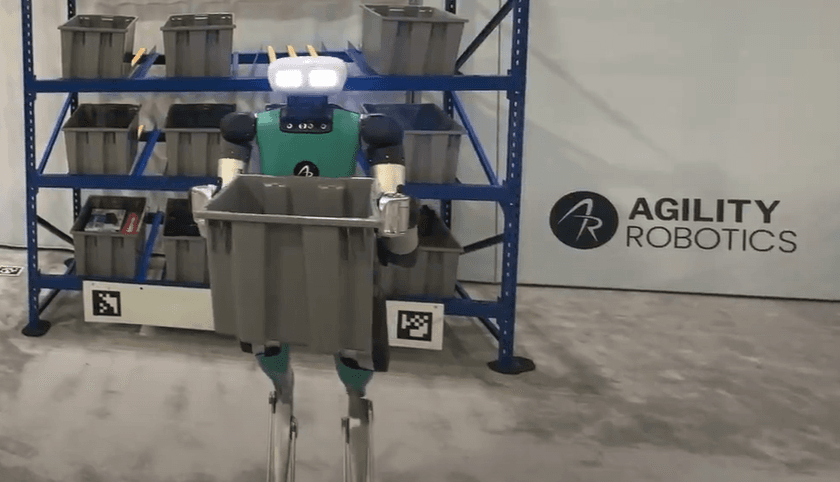Author: Jack Pearson, Commercial Director, Opteran.
Modex and LogiMAT provided us with a front-row seat to the latest industry trends.
From the integration of advanced autonomy, to the strategic moves towards smarter logistics, these are our key takeaways:
1. Humanoid robot reality check

Despite the buzz for humanoid robots in warehouses, practical challenges prevail. While there’s a compelling argument that the world, designed for humans, might naturally accommodate humanoid robots, especially in settings with labor shortages, the reality within warehouse environments tells a different story.
These spaces — vast, flat, and demanding high efficiency — highlight the limitations of humanoid robots’ speed and battery life. For humanoids to outcompete AGVs, they must excel in unstructured environments where humans effortlessly operate. However, this ambition is currently hampered by the significant technological hurdle, particularly robust autonomy software that is essential for navigating the complex and variable terrain of logistics and warehousing; let alone allowing such machines to operate in the real world alongside us.
2. Teleoperation bridging autonomy gaps

Reflex Robotics’ $50k teleoperated robot highlights a practical interim solution for autonomy. By enabling remote control, this approach offers a pathway to collect operational data while improving software. It’s a strategic step toward scalable autonomy, blending global labor with local robotics.
As humanoid robots struggle with less structured environments, teleoperation is gaining traction across various sectors, including autonomous vehicles and drones.
3. Mobile robot convergence

The display at Modex & LogiMAT was a sea of similarity: dozens of AMR companies, each with robots bearing comparable chassis designs, controllers, and sensors designed for similar purposes, all facing similar limitations. This stark uniformity points towards an imminent industry consolidation, with a likely decrease in the number of players over the next five years.
The critical differentiator in this competitive arena will be innovative technology that breaks the mold. At Opteran we focus on autonomy software that moves beyond the limitations of expensive lidar and camera SLAM systems prone to mislocalization with scene changes.
4. Our standout demo

Ocado’s showcase of their cubic Automated Storage and Retrieval Systems (ASRS) and the unveiling of their re-engineered robots mark a leap forward in warehouse grid automation technology. By employing topology optimization and leveraging HP 3D printing technology, Ocado achieved a significant reduction in robot weight—making these machines five times lighter than their predecessors.
This innovation enhances the space efficiency and adaptability of storage systems like those of Ocado and Autostore.
In Summary
Reflecting on Modex and LogiMAT, it’s clear the AGV and AMR sector is set for significant changes. Trends indicate a push for smarter, more cost-effective automation solutions, with a strong focus on overcoming the current limits of autonomy software. The industry is moving towards more streamlined and adaptable systems, as evidenced by the latest designs and strategic partnerships. This shift promises a future where advanced robotics meet the practical demands for 24/7 warehouse operations, driving efficiency and productivity in a global market.


